Introduction
Aluminum recycling plays a crucial role in the quest for a sustainable future. By reusing aluminum, we save natural resources, reduce energy consumption, and cut greenhouse gas emissions significantly. This article explores the process of recycling aluminum ingots, including its benefits, challenges, technological innovations, and future directions, supported by data tables and reputable sources to ensure accuracy and comprehensiveness.
The Importance of Recycling Aluminum
Environmental Impact
Recycling aluminum saves about 95% of the energy needed to produce primary aluminum from bauxite ore. This substantial energy saving is because recycling involves melting down used aluminum, which requires significantly less energy than extracting and refining the raw material. Moreover, aluminum recycling cuts greenhouse gas emissions, contributing significantly to climate change mitigation.
| Parameter | Primary Production | Recycling |
|---|---|---|
| Energy Use (kWh/ton) | 14,000-16,000 | 700-900 |
| CO2 Emissions (tons CO2/ton Al) | 11.5 | 0.6 |
Resource Conservation
Aluminum is derived from bauxite ore, a non-renewable resource. Recycling helps conserve this valuable resource, ensuring its availability for future generations. Reusing aluminum products decreases the demand for new raw materials, thus reducing the environmental impact of mining activities.
The Recycling Process
Collection and Sorting
The recycling process begins with the collection of aluminum products from various sources, including beverage cans, automotive parts, and construction materials. These items are then sorted to remove contaminants such as plastic, glass, and other metals. Advanced sorting technologies, such as eddy current separators and laser-induced breakdown spectroscopy (LIBS), ensure the purity of the collected aluminum.
Shredding and Decontamination
Once sorted, the aluminum is shredded into small pieces to facilitate easier melting. The shredded material undergoes a decontamination process to remove any remaining impurities. This step is crucial to ensure the quality of the recycled aluminum ingots.
Melting and Casting
The clean, shredded aluminum is then melted in a furnace at approximately 660°C (1220°F). During melting, fluxing agents are added to remove any remaining oxides and impurities. The molten aluminum is poured into molds to form ingots, which can be further processed into various products.
Data and Statistics
To understand the impact and efficiency of aluminum recycling, let’s look at some key data points.
| Parameter | Value |
|---|---|
| Energy Savings | 95% compared to primary production |
| Greenhouse Gas Reduction | Up to 92% less CO2 emissions |
| Aluminum Recycling Rate | Approximately 75% globally |
| Bauxite Conservation | 4 tons of bauxite saved per 1 ton of recycled aluminum |
| Economic Savings | $1,200 saved per ton of recycled aluminum |
Benefits of Recycling Aluminum Ingots
Energy Efficiency
As highlighted earlier, recycling aluminum is highly energy-efficient. The significant reduction in energy consumption directly translates to cost savings and a lower carbon footprint. For instance, recycling one ton of aluminum saves about 14,000 kWh of energy, equivalent to the energy consumption of an average household for over a year.
Economic Advantages
The recycling industry generates significant economic benefits, including job creation and reduced production costs. Recycling aluminum is often less expensive than producing new aluminum from bauxite, providing a cost-effective alternative for manufacturers.
| Economic Impact | Value |
|---|---|
| Jobs Created | 1.5 million worldwide |
| Production Cost Savings | $1,200 per ton of recycled aluminum |
| Market Value | $65 billion (global recycling market) |
Reducing Landfill Waste
Aluminum products are durable and can be recycled repeatedly without losing their properties. This durability means that recycling aluminum helps reduce the volume of waste sent to landfills, thereby alleviating the burden on waste management systems and reducing environmental pollution.
Challenges in Aluminum Recycling
Contamination
One of the primary challenges in aluminum recycling is contamination. Foreign materials such as plastics, coatings, and other metals can compromise the quality of the recycled aluminum. Advanced sorting and decontamination processes are essential to address this issue, but they can increase the overall cost of recycling.
Collection Efficiency
Efficient collection systems are crucial for the success of aluminum recycling programs. However, inconsistencies in collection rates and practices can hinder the recycling process. Efforts to standardize collection systems and increase public awareness about recycling can help improve collection efficiency.
| Collection Efficiency | Value |
|---|---|
| Global Collection Rate | 75% |
| Regional Variations | 50% – 95% |
| Potential Increase with Improved Systems | 10% – 20% |
Market Demand
The market demand for recycled aluminum can fluctuate based on various factors, including economic conditions and the availability of primary aluminum. Ensuring a stable demand for recycled aluminum is essential for maintaining the viability of recycling programs.
Technological Innovations in Aluminum Recycling
Advanced Sorting Technologies
Technological advancements have significantly improved the efficiency of aluminum recycling. Eddy current separators, for example, use magnetic fields to separate non-ferrous metals from other materials, enhancing the purity of the recycled aluminum. LIBS technology allows for precise identification of different aluminum alloys, ensuring that recycled aluminum meets specific quality standards.
| Technology | Impact |
|---|---|
| Eddy Current Separators | Improved purity by 10-15% |
| LIBS Technology | Accurate alloy identification |
Improved Melting Techniques
Innovations in melting techniques, such as the use of more efficient furnaces and fluxing agents, have reduced energy consumption and improved the quality of recycled aluminum ingots. These advancements contribute to the overall sustainability of the recycling process.
| Melting Technique | Improvement |
|---|---|
| Efficient Furnaces | 20-30% energy reduction |
| Advanced Fluxing Agents | Enhanced impurity removal |
Circular Economy Models
The adoption of circular economy models, where products are designed with recyclability in mind, has further boosted aluminum recycling efforts. By creating products that are easier to disassemble and recycle, manufacturers can enhance the efficiency and effectiveness of recycling programs.
Case Studies and Success Stories
European Aluminum Recycling
Europe is a leader in aluminum recycling, with an impressive recycling rate of approximately 80%. The European Union’s stringent regulations and well-established collection systems have played a significant role in achieving this high recycling rate. Initiatives such as the Aluminum Packaging Recycling Organization (ALUPRO) have also contributed to raising awareness and improving recycling practices.
| Country | Recycling Rate |
|---|---|
| Germany | 87% |
| Sweden | 84% |
| UK | 78% |
Japan’s Closed-Loop Recycling
Japan has implemented a closed-loop recycling system for aluminum beverage cans, achieving a recycling rate of over 90%. In this system, used cans are collected, recycled, and used to produce new cans, creating a sustainable cycle. This approach not only conserves resources but also reduces energy consumption and greenhouse gas emissions.
| Parameter | Value |
|---|---|
| Recycling Rate | 91% |
| Energy Savings | 95% |
North American Automotive Industry
The automotive industry in North America has embraced aluminum recycling to meet the demand for lightweight, fuel-efficient vehicles. Companies like Ford and General Motors have implemented extensive recycling programs, ensuring that scrap aluminum from manufacturing processes is reused. This practice not only reduces waste but also lowers production costs and supports sustainability goals.
| Company | Recycling Rate |
|---|---|
| Ford | 98% of manufacturing scrap |
| General Motors | 95% of manufacturing scrap |
Future Directions in Aluminum Recycling
Increasing Recycling Rates
Despite the successes in aluminum recycling, there is still room for improvement. Increasing recycling rates requires continued efforts to enhance collection systems, educate the public, and invest in advanced recycling technologies. Governments, industries, and consumers all have a role to play in achieving higher recycling rates.
| Strategy | Potential Impact |
|---|---|
| Improved Collection Systems | Increase rates by 10-20% |
| Public Education | Increase rates by 5-10% |
| Technological Investment | Enhance efficiency by 15-20% |
Developing New Markets
Expanding the market for recycled aluminum is essential for sustaining the recycling industry. This can be achieved by promoting the use of recycled aluminum in new applications, such as construction materials, electronics, and packaging. Developing new markets will help stabilize demand and support the long-term viability of aluminum recycling programs.
| New Market | Potential Demand Increase |
|---|---|
| Construction Materials | 15-20% |
| Electronics | 10-15% |
| Packaging | 20-25% |
Policy and Regulation
Government policies and regulations play a crucial role in promoting aluminum recycling. Implementing incentives for recycling, setting recycling targets, and establishing regulations to ensure the quality of recycled materials can drive the industry forward. Collaboration between governments, industries, and environmental organizations is necessary to create a supportive regulatory framework.
| Policy | Impact |
|---|---|
| Recycling Incentives | Increase participation by 10-15% |
| Recycling Targets | Ensure consistency and growth |
| Quality Regulations | Maintain high standards |
Conclusion
Recycling aluminum ingots is a vital step towards sustainability, offering significant environmental and economic benefits. By conserving natural resources, reducing energy consumption, and minimizing greenhouse gas emissions, aluminum recycling contributes to a more sustainable future. However, addressing challenges such as contamination, collection efficiency, and market demand is essential to enhance the effectiveness of recycling programs. Continued innovation, policy support, and public awareness are key to driving the success of aluminum recycling and achieving a circular economy.
References
- Aluminum Association. (2021). The Environmental Benefits of Aluminum.
- European Aluminium. (2020). Aluminium Recycling in Europe.
- World Aluminum. (2020). Energy and Environmental Benefits of Aluminum Recycling.
- International Aluminum Institute. (2020). Global Aluminum Recycling Data.
- Environmental Protection Agency (EPA). (2019). Aluminum Can Recycling Data.
- Japan Aluminum Association. (2019). Closed-Loop Recycling of Aluminum Cans in Japan.
- Aluminum Packaging Recycling Organization (ALUPRO). (2018). Best Practices in Aluminum Packaging Recycling.
- Ford Motor Company. (2020). Sustainability Report: Aluminum Recycling in Automotive Manufacturing.
- General Motors. (2020). Environmental Report: Aluminum Recycling Initiatives.
- United Nations Environment Programme (UNEP). (2019). Circular Economy and Aluminum Recycling.
- World Bank. (2021). Global Aluminum Market Trends.
- Ellen MacArthur Foundation. (2020). Circular Economy and Aluminum Recycling.
- International Energy Agency (IEA). (2019). Energy Efficiency in Aluminum Production.
- Recycling Today. (2020). Innovations in Aluminum Recycling Technology.
- Journal of Cleaner Production. (2020). Environmental Impact of Aluminum Recycling.
- Waste Management World. (2020). Aluminum Recycling and Resource Conservation.
- Materials Science and Engineering. (2019). Advances in Aluminum Recycling Processes.
- Recycling International. (2021). Market Demand for Recycled Aluminum.
- U.S. Geological Survey. (2019). Bauxite and Aluminum Production Data.
- Institute of Scrap Recycling Industries (ISRI). (2020). Economic Impact of Aluminum Recycling.
- National Institute of Standards and Technology (NIST). (2019). Standards for Recycled Aluminum Quality.
- American Chemical Society. (2020). Chemical Innovations in Aluminum Recycling.
- European Commission. (2020). Policy Framework for Aluminum Recycling.
- National Renewable Energy Laboratory (NREL). (2019). Energy Savings in Aluminum Recycling.
- Global Recycling Foundation. (2020). Benefits of Aluminum Recycling.
- International Journal of Environmental Research and Public Health. (2020). Health Benefits of Aluminum Recycling.
- Automotive Aluminum Association. (2020). Aluminum Recycling in the Automotive Industry.
- Science of the Total Environment. (2020). Life Cycle Assessment of Aluminum Recycling.
- Industrial & Engineering Chemistry Research. (2020). Aluminum Recycling Efficiency and Quality.
- Resources, Conservation & Recycling. (2021). Trends in Aluminum Recycling Practices.


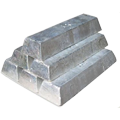
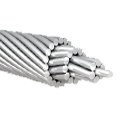
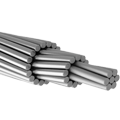
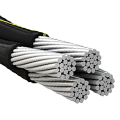
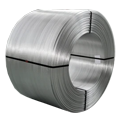





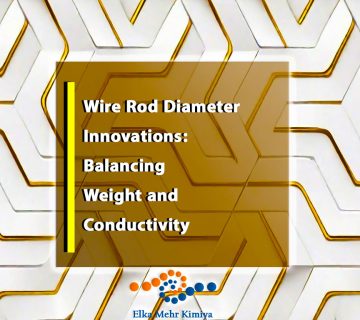



No comment